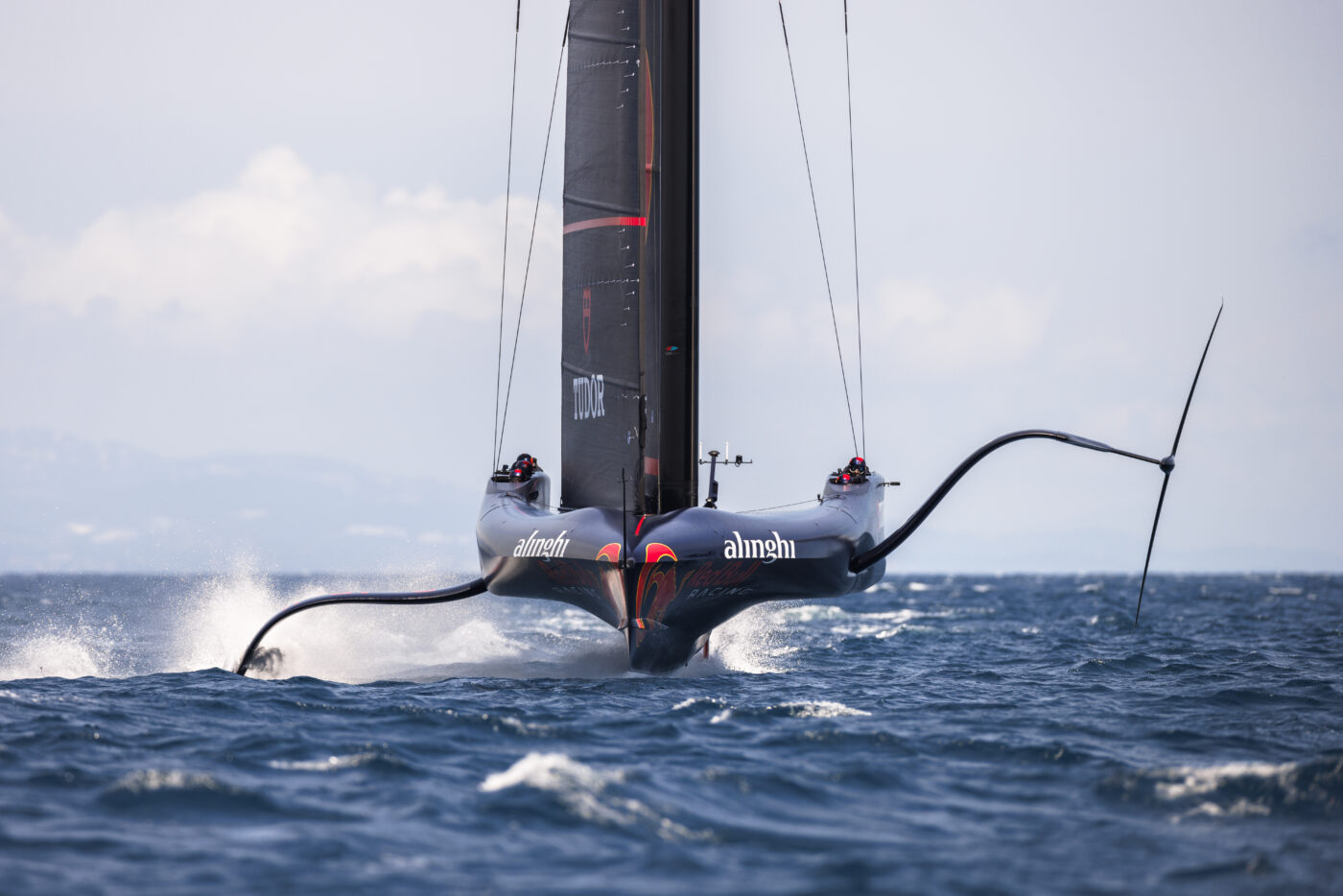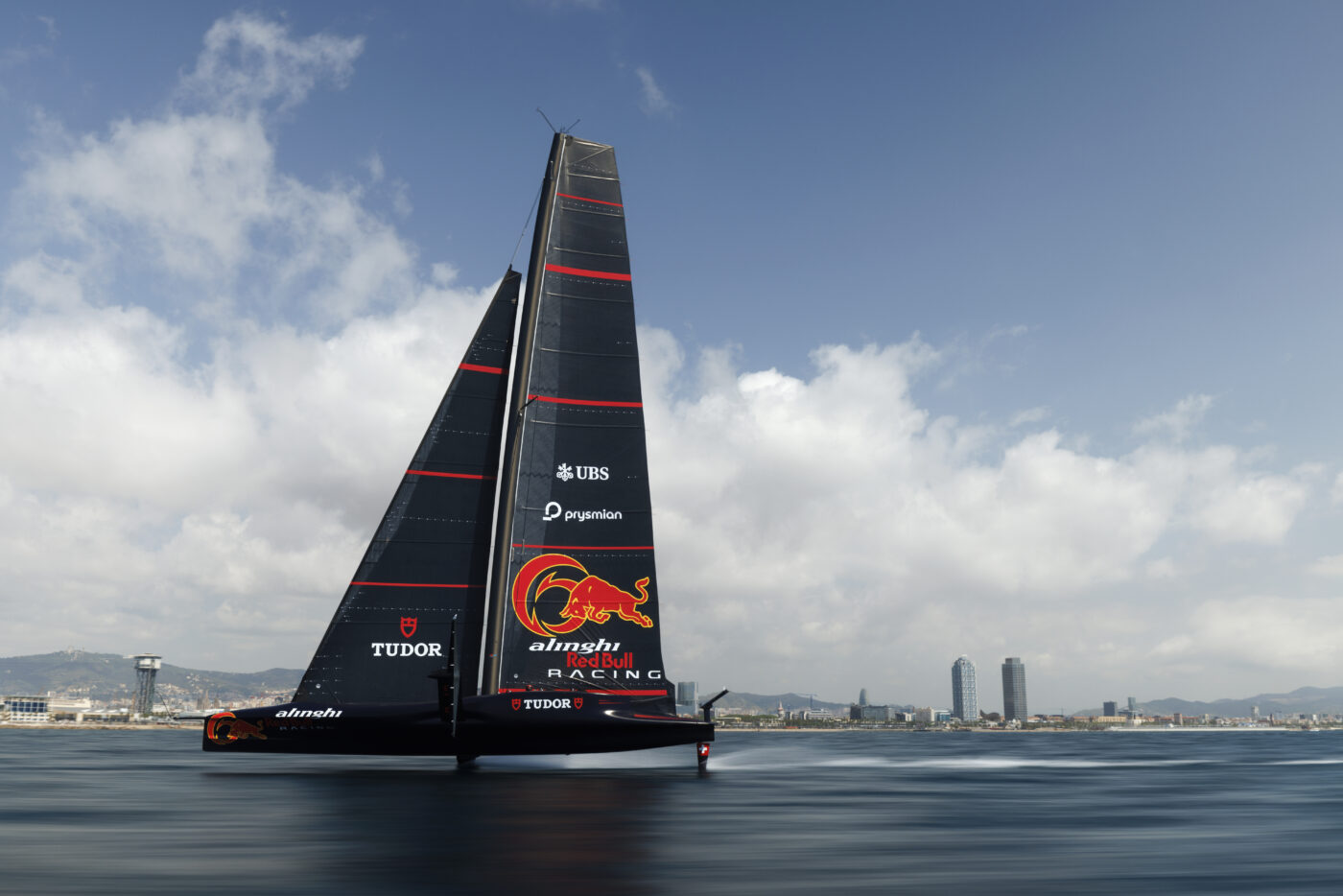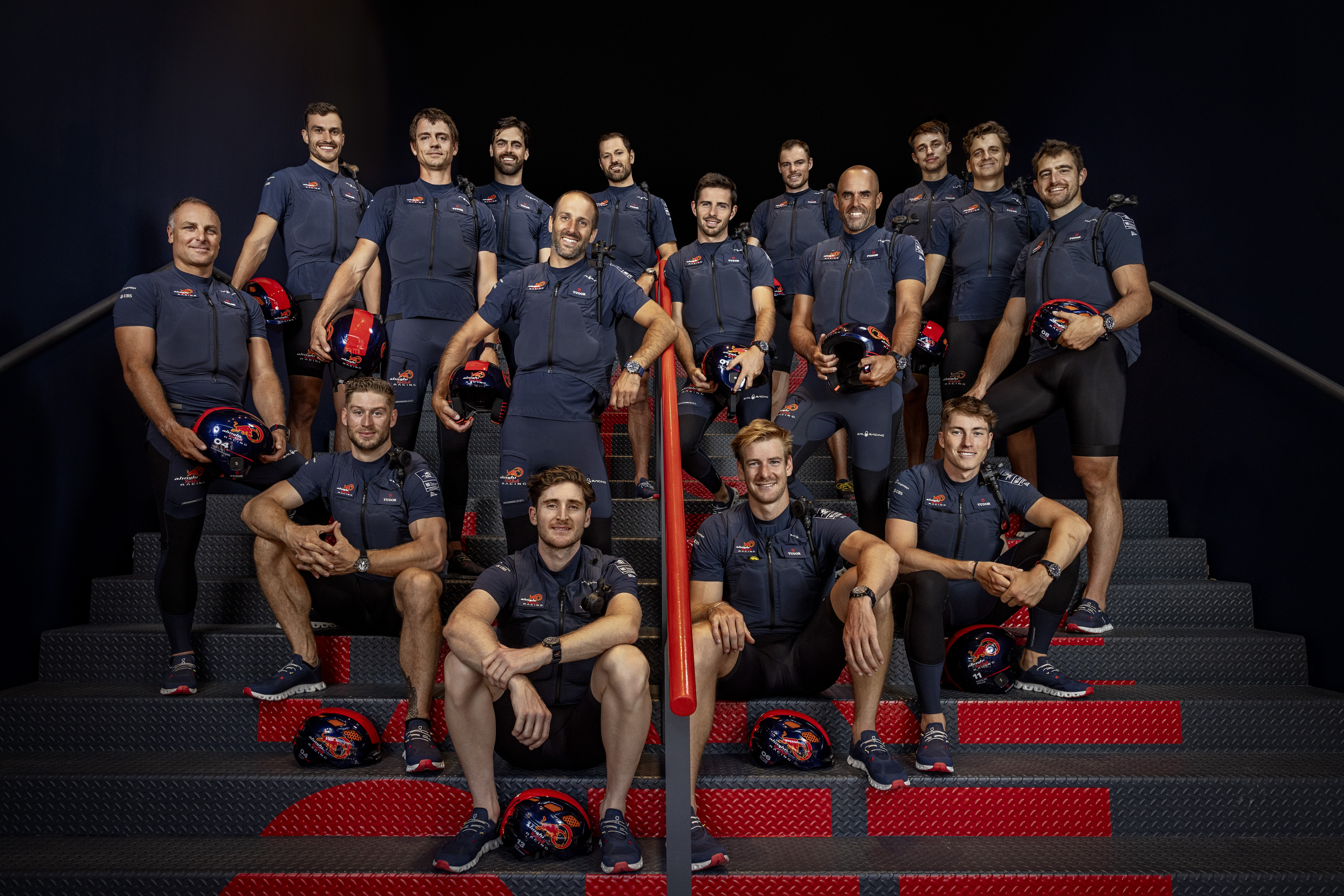The stakes are high, the risks are formidable and the boat produced by the high-profile partnership is new and untested. Two of the biggest names in their fields – Alinghi and Red Bull – have joined forces to aim for the win in the 37th America’s Cup. Despite a tradition of secrecy in the elite competitive environment, the partners have opened up about how they’re working together, what they expect and how their boat came to look so aggressive.
Barcelona (SPAIN) – Ever since Alinghi and Red Bull announced their America’s Cup partnership in 2021, one of the best-kept secrets in sport has been how the two technological innovators were working together, and which aspects of the boat they were collaborating on. Now, with less than 50 days before preliminary racing begins at the event venue in Barcelona, Spain, top designers and experts from both sides of Alinghi Red Bull Racing are discussing their roles in developing a boat that’s turning heads among media, fans and competitors alike.
Dating to 1851 and known as “the race with no second place,” the America’s Cup is the pinnacle of sailing competition and the oldest active international sporting trophy. In 2024, the six competing teams will be sailing AC75 monohulls that are the most technological boats ever launched. With sails as their “motors” and foils that lift them out of the water, they’re capable of speeds over 54 knots (100 km/h) – and these towering, 75-foot-long vessels have no brakes.
Sailing for the Société Nautique de Genève of landlocked Switzerland, the Alinghi syndicate founded by Ernesto Bertarelli stunned the sailing world by winning its rookie America’s Cup campaign in 2003 and successfully defended in 2007. Now back for the first time in over a decade, and with an entirely new team of Swiss sailors on a Swiss-built boat, Bertarelli once again has a “take no prisoners” approach. He says, “I am 100% motivated, and if you ask me if we can win the Cup as a new team, in for the first time, I’m going to say yes, as much as we did back then [2003].”
Red Bull shares this vision, and brings the expertise of its Red Bull Advanced Technologies unit, which works with global players, sports teams and entrepreneurs worldwide to deliver effective solutions for their innovations.
As Adolfo Carrau, Design Coordinator for Alinghi Red Bull Racing, explains, ever since the partnership was formed, the give-and-take between the Alinghi design team and Red Bull Advanced Technologies has sparked progression.
“Within the rules, there’s plenty of freedom to do our own design,” Carrau says. “The idea was for them [Red Bull Advanced Technologies] to challenge us all the time. They were coming from a totally different background and the interesting part of that collaboration is how their engineers and aerodynamicists came with different ideas and could challenge us on the rules. It’s a very close group, and it works really well.”
Rob Gray, Technical Director of Red Bull Advanced Technologies, says, “We were actually quite surprised how important the aerodynamics were, because everyone assumed initially that boats had lots of hydrodynamics; but actually these boats have so little contact with the water [that] the aero has become very important.”
After two years of development including nearly 11 months of construction in Ecublens, Switzerland, Alinghi Red Bull Racing’s “BoatOne” was unveiled to reveal a striking hull with a sharply angular look that insiders – including opponent teams – have described as “radical” and, frequently, “aggressive.”
Alinghi Red Bull Racing’s Principal Designer, Marcelino Botin, says, “We really didn’t think beforehand that it needed to look aggressive – it just evolves in a certain way.” He acknowledges, however, that it does “look fast and aggressive… and mean.”
When it comes to the hydrodynamics of lifting nearly 7 tons of boat and crew to fly on foils, the quest for sheer speed is only part of the task. Risks include not only collision with fast-moving opponents, but also “cavitation,” when water begins to boil over the foils, dramatically reducing control. And then there’s the dreaded potential for “ventilation,” when air around the foil can cause a boat to take a sudden, high-speed nosedive.
So besides collaborating on the hull, and reducing the weight of certain parts, Red Bull Advanced Technologies has provided input on everything from the foils to the controls and simulator.
“And then in the electrical world, we’ve done an awful lot of designing of the electrical installations, and that’s where we’ve really brought that sort of philosophy that we use on the Formula 1 car,” Gray adds, noting that the learning and collaboration has been strongly beneficial for Red Bull Advanced Technologies as well.
Now, with BoatOne’s first test in competition looming at the Preliminary Regatta in Barcelona on August 22-25, the team of eight sailors are making the most of their training and provide continuous feedback to the design team to facilitate refinements.
“The cooperation with Red Bull Advanced Technologies is still very strong and very tight,” says Silvio Arrivabene, Co-General Manager of Alinghi Red Bull Racing. Looking ahead to BoatOne’s performance in August and beyond, he says he’s been happy so far, but, “We are just very focused ahead, thinking about the things we have to do to get her full potential. We want to get to the start line with a package which is capable of winning, then the race is the race and anything can happen. We’re going to see it on the water and hopefully prevail.”
AVAILABLE CONTENT
(free content for editorial use – no restrictions)
– Comprehensive News Cut with shot list / transcript featuring BoatOne’s transport, launch and training on the water, interviews with key players in the team, and behind-the-scenes footage, plus more
–> via RED BULL CONTENT POOL
Contact: Fabian Ress
fabian.ress@3mpg.ch / +49 173 248 8404
_______
Images free of charge for editorial use.
Credit: Red Bull Content Pool



